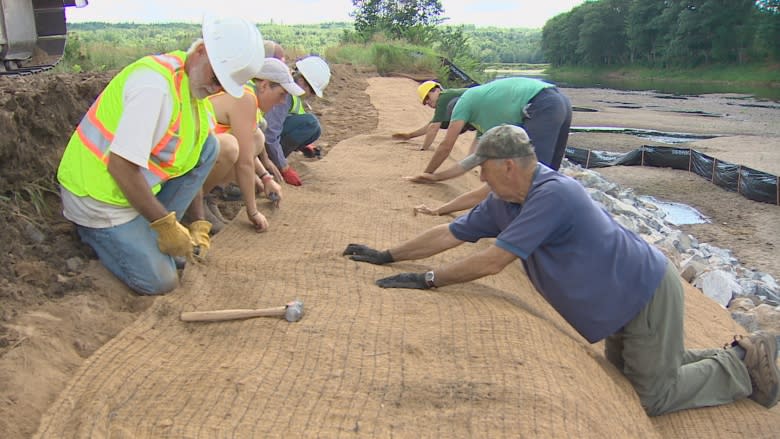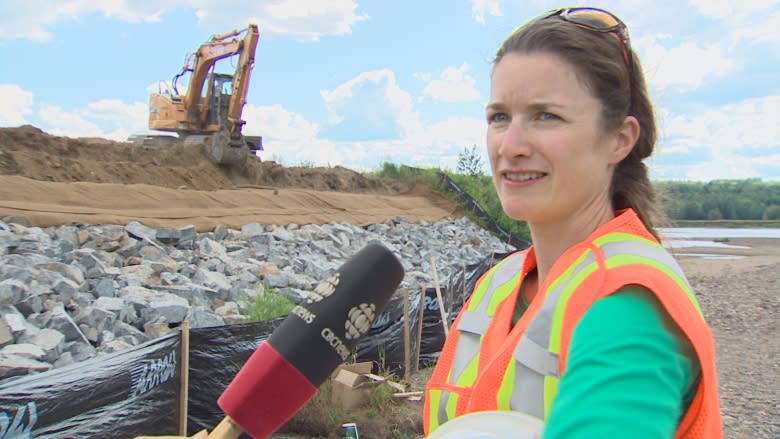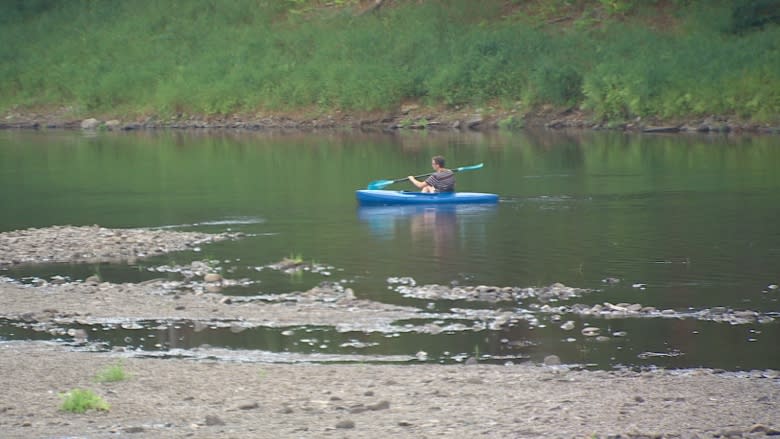Watershed group takes 'blanket' approach to stopping erosion
Two of the Nashwaak River's big issues are warm water and high metal content and a project underway this week is supposed to help with both.
Members of the Nashwaak Watershed Association and contractors have been busy rebuilding a section of riverbank south of the old cotton mill in the Marysville area of Fredericton.
Instead of the typical way people reinforce their waterfront properties with a pile of rocks, they're using a bioengineered technique.
It's less complicated and less expensive than the more popular and ecologically sterile rock-wall alternative, the association says.
Jillian Hudgins, the project co-ordinator, said the work begins with a rock toe, a base of rocks placed firmly along the lower part of the riverbank.
"We get big spring floods here, ice flowing through, so we need that rock toe to secure the bottom of the river bank. … And then the upper portion of the river bank is covered with a geotextile fabric — an erosion control blanket."
Under that blanket are half-metre soil tiers covered in timothy, clover and oat seeds.
If all goes as planned, the grass will grow through and, along with willow trees and native shrubs, the vegetation will secure the riverbank by the time the textile blanket disintegrates in three years.
The blanket costs about $600, said Hudgins, and it would have taken several thousand dollars worth of rocks to cover the same space.
And this technique is more effective, she said.
"Often with rock armouring you're just pushing the problem downstream ... your neighbour's property is then going to start eroding."
Bill Gammon of Durham Bridge, one of about 10 volunteers lending their hands to the landscaping project, said the river needs all the help it can get.
"It's under duress," Gammon said. "You see how low the water is … most likely it's about the lowest I think I've seen it in over 30 years, so this type of thing keeps the river from widening, making it worse, and if you can keep the water cooler the fish — salmon — love it better."
Hudgins agreed the water in the Nashwaak has been "way too warm for fish."
Another "major issue" with the water quality in the Nashwaak is the level of metals, Hudgins said, and that often comes from soil.
"The topsoil mining is terrible," said Gammon, "but … this is a start in the right direction."
Besides reducing metal content, stopping erosion also keeps sediment from filling up salmon pools, Hudgins said.
The section of riverbank being rebuilt this week is part of an old hayfield now owned by the city that the watershed group is trying to restore to floodplain forest, Hudgins said.
It was identified with serious erosion during a geomorphic survey last summer, she said.
The Nashwaak Watershed Association got funding from the federal and provincial governments for the project. It hopes to use the project as a demonstration site and do more riverbank restoration work on the Nashwaak and elsewhere, Hudgins said.





